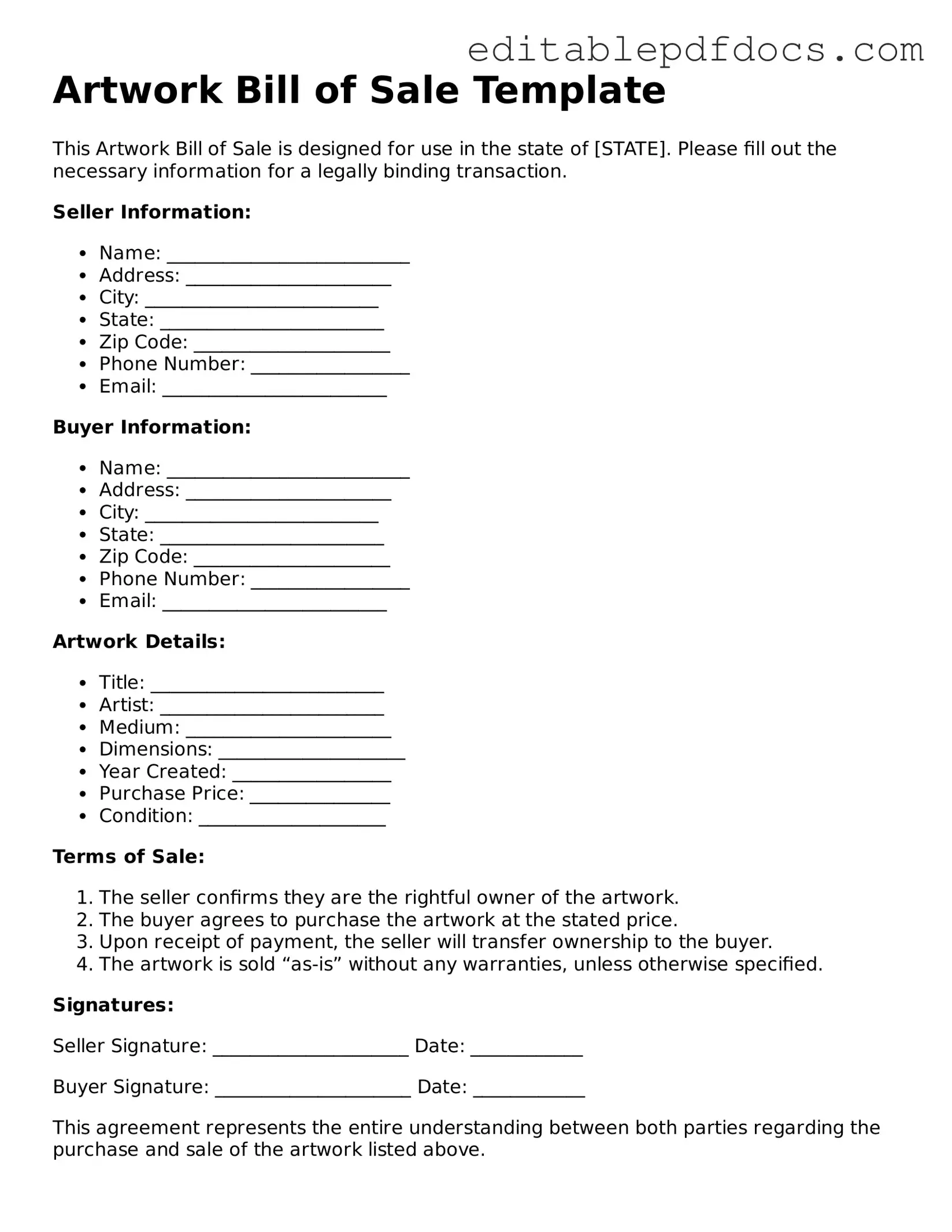When it comes to purchasing or selling artwork, the Artwork Bill of Sale form plays a crucial role in establishing ownership and documenting the transaction. However, many individuals make common mistakes that can lead to confusion or legal complications down the line. Understanding these pitfalls can help ensure a smoother process.
One frequent mistake is failing to provide complete information. Buyers and sellers often overlook the necessity of including all relevant details, such as the artist's name, the title of the artwork, and a clear description of the piece. Without this information, the document may lack the specificity needed to validate the transaction, leading to potential disputes about ownership or authenticity.
Another common error involves neglecting to include a purchase price. While it may seem obvious, some individuals forget to clearly state the agreed-upon amount for the artwork. This omission can create confusion about the terms of the sale and may complicate any future claims regarding the artwork’s value or ownership.
Additionally, many people fail to sign the document. Both parties must sign the Artwork Bill of Sale to make it legally binding. Without signatures, the document lacks the necessary legal weight, which could render it ineffective in resolving disputes. Remember, a signature is not just a formality; it signifies agreement and acknowledgment of the transaction.
Another mistake often made is not including the date of the transaction. The date is essential for establishing when the sale took place, which can be important for tax purposes or for determining the timeline of ownership. Without a date, the form may lack clarity, leading to potential issues in the future.
Lastly, many individuals overlook the importance of keeping a copy of the completed form. After filling out the Artwork Bill of Sale, it’s vital for both parties to retain a copy for their records. This ensures that each party has access to the terms of the sale and can refer back to the agreement if any questions arise later. Forgetting this step can lead to a lack of evidence in case of disputes, making it harder to resolve any issues that may come up.
